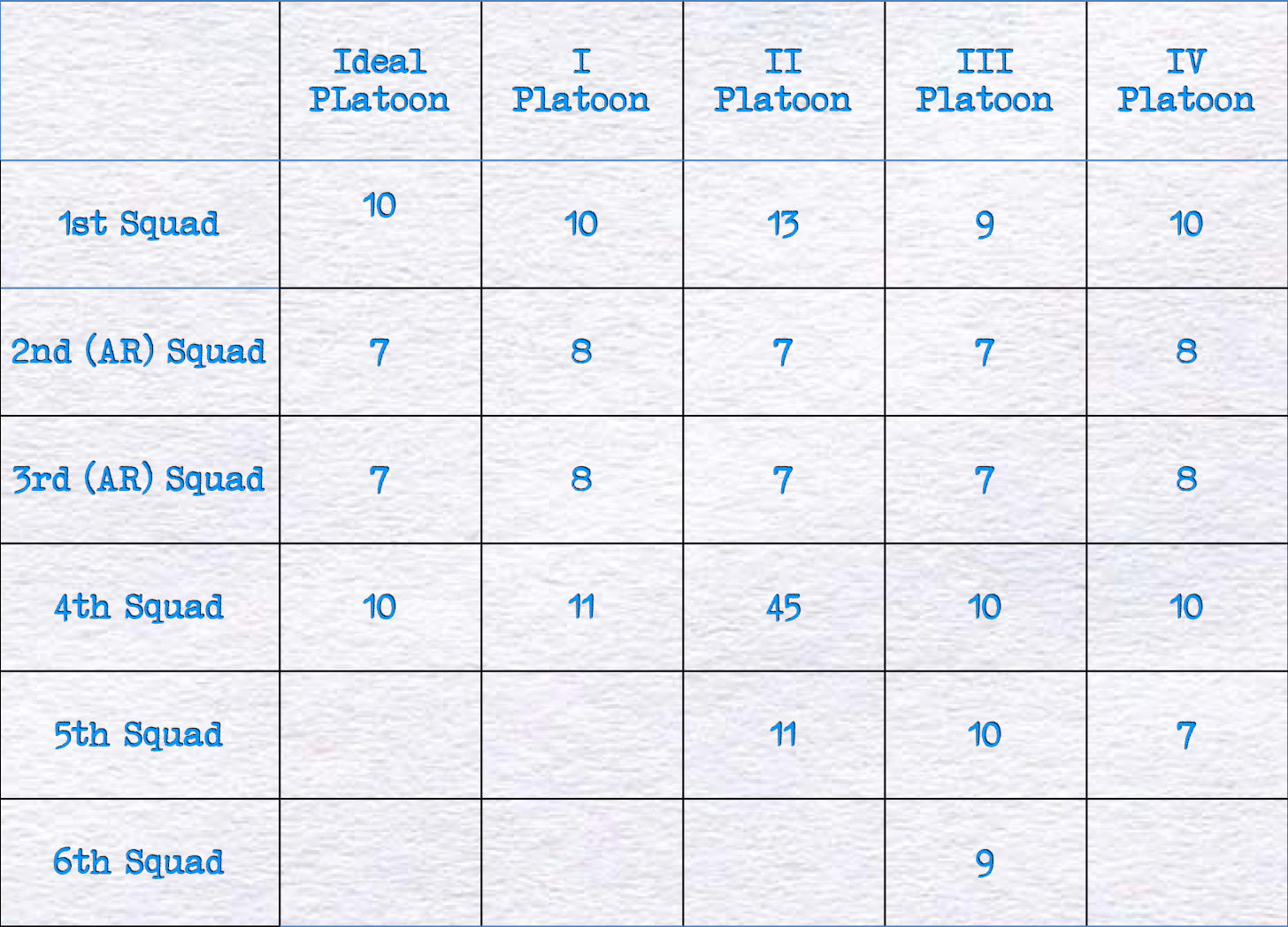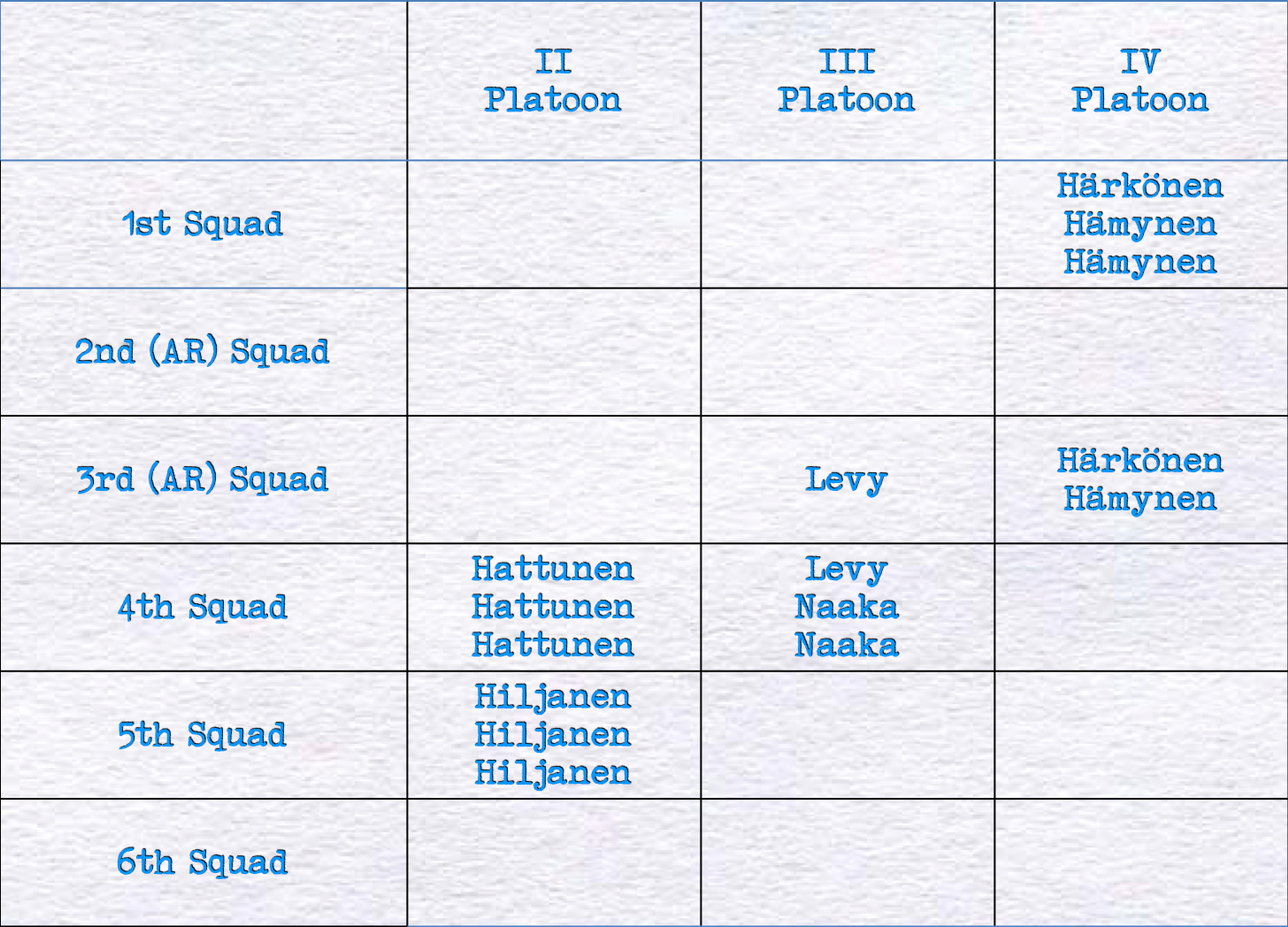At mobilization, the structure of the 1st Company of the 10th Detached Battalion resembled, but did not match, the table of organization for a rifle company of the Finnish Army of 1939. In accordance with those establishments, each of the four rifle platoons contained two small automatic rifle squads, each of which wielded a single Lahti-Solaranta “long rifle” [Pikakivääri]. However, while each rifle platoon was supposed to have but two rifle squads, three of the four rifle platoons possessed more rifle squads than they rated.
The presence of additional rifle squads in the company seems to have resulted from the way that the 10th Detached Battalion had come together. Mobilized on 8 October 1939, the first day of the “special training period” that preceded the Soviet invasion, the unit incorporated all of the trained men who lived in a particular community in the vicinity of Suojärvi, a large lake in Eastern Karelia. As the number of these recalled reservists exceeded the number of men called for by the table of organization, the commander of the company, Captain Y.E. Saarelainen, formed four supernumerary rifle squads.
While the availability of additional men explains the forming of four additional rifle squads, it fails to account for the irregular way those elements were parceled out to platoons. (A conventionally-minded company commander would probably have divided the extra men evenly among his four rifle platoons. A leader inclined to organizational innovation might have formed the hunters and woodsmen of his unit into a specialized scout platoon.)
One clue to this conundrum comes from the apparent absence of any attempt to even out the number of men assigned to each squad. Thus, the 2nd Platoon [II Jokkue], which could have formed its thirty-five spare riflemen into two twelve-man squads and one eleven-man squad, assigned thirteen men to its first squad, leaving the remaining twenty-two to be divided between the fourth and fifth squads. Likewise, the 4th Platoon [IV Jokkue], which could have organized its twenty-seven extra riflemen into three nine-man squads, made two ten-man squads and one seven-man squad.
Another clue comes from the surnames of the men assigned to particular squads and platoons. Within the 2nd Platoon, there were two squads in which three men bore same surname (Hattunen and Hiljanen). Within the 3rd Platoon, one pair of men with the same family name (Naaka) found themselves same squad and while one such duo (Levy) was divided between two squads. Within the 4th Platoon, two squads obtained men from one pair (Härkönen) and one set of three (Hiljanen.)
The distribution of men who shared surnames with one or two platoon-mates suggests that platoons (and, perhaps, even squads) were formed on the basis of locality. That is to say, the company commander may well have decided that it was better to keep the men from the same village or family in the same platoon (if not squad) than it was to distribute available manpower in a symmetrical fashion.
Source: Erillinen Pataljoona 10 [Detached Battalion 10] Toimintakertomus 1939-1940 [After Action Report], Talvisodan Sotapäiväkirjat (1939-1940) [War Diaries of the Winter War (1939-1940)], National Archives of Finland
For Further Reading:
To Share, Subscribe, or Support:










